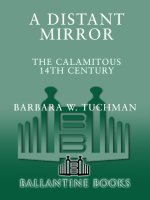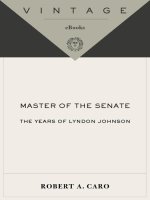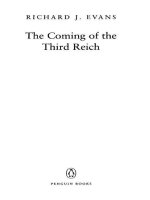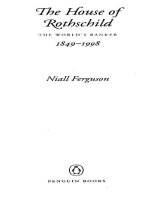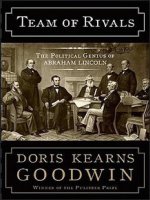Alison weir the lady in the tower the fal eyn (v5 0)
Bạn đang xem bản rút gọn của tài liệu. Xem và tải ngay bản đầy đủ của tài liệu tại đây (4.19 MB, 365 trang )
ALSO BY ALISON WEIR
Mistress of the Monarchy:
The Life of Katherine Swynford, Duchess of Lancaster
The Lady Elizabeth:
A Novel
Innocent Traitor:
A Novel of Lady Jane Grey
Britain’s Royal Families:
The Complete Genealogy
The Six Wives of Henry VIII
The Princes in the Tower
The Wars of the Roses
Children of Henry VIII
The Life of Elizabeth I
Eleanor of Aquitaine
Henry VIII: The King and His Court
Mary, Queen of Scots, and the Murder of Lord Darnley
Queen Isabella
This book is dedicated to a dear friend,
Father Luke
(Rev. Canon Anthony Verhees),
to mark his eightieth birthday.
PREFACE
This is where my interest in history began, many years ago, with Anne Boleyn and the dramatic
story of her fall. That interest has never abated—I have written at length on Anne in two earlier
books, The Six Wives of Henry VIII and Henry VIII: King and Court, and in a number of
unpublished works—and I know that it is shared by many: the crowds who visit the Tower of
London to see the supposed site of her scaffold, or flock to Hampton Court, where Anne stayed in
happier days, or to Hever Castle, her family home, or Blickling, the place of her birth. The
fascination is evident in numerous sites on the Internet, the almost-regular appearance of
biographies of Anne Boleyn, films and television dramas about her, and the numerous letters and
e-mails I have received from readers over the years.
Yet never before—surprisingly—has there been a book devoted entirely to the fall of Anne
Boleyn, and it has been a deeply satisfying experience having the scope to research in depth this
most discussed and debated aspect of Anne’s life. This has allowed me to achieve new insights
and to debunk many myths and misapprehensions. It has been an exciting project, and I have
constantly been amazed at what I discovered.
Coming to this subject afresh, I have—as always—questioned all my preconceptions and
assumptions, and sometimes had to revise them, which of course exposes errors in my own
previous books, and indeed in nearly every other book on Anne, however diligently researched. In
writing a full biography, the historian does not have the opportunity to go into such detail—in
research, narrative, and analysis—as I have had the good fortune to be able to do in a book that
essentially covers a period of four months.
I wish to stress that this book is based largely on original sources, and that the conclusions in it
are my own, sometimes reached objectively after reading the various theories. This might sound
like a statement of the obvious, but in some aspects, my conclusions coincide with others’. That
has often been pure coincidence. I purposely put off reading all the modern biographies of Anne
until my research from contemporary sources was completed and the book was in its penultimate
draft. I have gratefully given due credit to historians whose theories and interpretations have
informed my work, but otherwise all conjectures, inferences, and conclusions are my own,
independently reached without reference to the biographies. I wish in particular to pay tribute to
those by Professor Eric Ives, whose theories about the reasons for Anne Boleyn’s fall have been
particularly illuminating.
Since contemporary sources are key factors in studying Anne Boleyn’s fall, readers may wish to
look at the section “Notes on Some of the Sources,” which appear after the main text, before
reading the book. Historians must always decide what weight to give each source, and this guide
is there to evaluate the reliability and veracity of the chief ones for the period.
The approximate modern worth of monetary amounts has been given in brackets after each sum
mentioned in the text.
Above all, this book has been a labor of love, as well as an exciting quest for the truth—or as
near as anyone can get to the truth.
I am deeply grateful for the help and support of many kind and generous people: firstly, two
dear friends and fellow historians, Tracy Borman, for so generously lending me the first chapter of
her forthcoming book on Elizabeth I, for hours spent in convivial discussion about aspects of Anne
and Elizabeth that are common to both our subjects, and for joining me for sell-out events
mischievously entitled “The Whore and the Virgin;” and Sarah Gristwood, for so thoughtfully
obtaining for me the one rare biography of Anne that I had no time to track down, and for showing
me a better way to write a book!
I should also like to thank Glen Lucas and Karen Marston, for so generously giving of their time,
without charge, to translate documents from Latin and French; Patricia Macleod of Sutton Library,
for putting me in touch with Glen Lucas and for organizing such wonderful events; Sue Wingrove
of BBC History magazine, for very kindly sending me photocopies of out-of-print articles; Canon
Anthony Verhees (Father Luke), for advice and information on funeral masses in the sixteenth
century and other issues raised by Anne Boleyn’s fate; the historian Christopher Warwick, another
dear friend, for advice, and for photographing a model of the Tower of London based on the 1597
map; Monica Tandy and Alan Mudie, for information on ghost stories about Anne Boleyn;
Samantha Brown and Ann Morrice of Historic Royal Palaces, for their wonderful enthusiasm for
Tudor history and for making it possible for me to speak about Anne and Henry VIII at Hampton
Court, which has been an enormous privilege.
The list of people who have supported me in various ways whilst I was writing this book is a
long one, but I wish especially to mention my agent, Julian Alexander; my commissioning editors,
Will Sulkin at Jonathan Cape in London and Susanna Porter at Ballantine Books in New York; my
editorial director, Anthony Whittome, his assistant James Nightingale, and the dedicated and
helpful publishing teams at Random House in the United Kingdom and the United States. I am
tremendously grateful to you all.
More special thanks must go to my family and friends, who have all had to put up with me
during the writing of this book, in particular my wonderfully supportive husband, Rankin; my son,
John; my daughter, Kate; my mother, Doreen Cullen; and my cousin, Christine Armour. I wish also
to express my gratitude to (in no particular order) Ian Robinson, Kate Williams, Siobhan Clarke,
Anthony Cunningham, Leza Mitchell, Richard Foreman, Alison Montgomerie, Roger England, Joan
and John Borman, David Crothers, Richard Stubbings, Kathleen Carroll, Ian Franklin, Jean and
Nick Hubbard, Nicholas and Carol Bennett, Anthony and Jackie Goodman, Pauline Hall, Karin
Scherer, Gary and Barbara Leeds, Rose Lukas, John and Joanna Marston, Anita Myatt, Josephine
Ross, Burnell and Shelley Tucker, Monica and John Tyler, Peter Taylor, Frank and Janet Taylor,
Nicola Tallis, Alex von Tunzelmann, Jane Robins, Alice Hogge, Justin Pollard, Nellie Verhees,
Kenneth and Elizabeth Weir, Ronald and Alison Weir, Martha Whittome, Jessie Childs, Helen
Rappaport, Lynn and Anne Saunders, Jane Furnival, Mavis Cheek, Molly Bradshaw, Dave
Musgrove and many more!!
You have all been wonderful in so many ways—thank you.
Alison Weir,
Carshalton, Surrey,
Christmas 2008
CONTENTS
PREFACE
LIST OF ILLUSTRATIONS
GENEALOGICAL TABLES
PROLOGUE The Solemn Joust
CHAPTER 1 Occurrences That Presaged Evil
CHAPTER 2 The Scandal of Christendom
CHAPTER 3 The Frailty of Human Affairs
CHAPTER 4 Plotting the Affair
CHAPTER 5 Unlawful Lechery
CHAPTER 6 Turning Trust to Treason
CHAPTER 7 To the Tower
CHAPTER 8 Stained in Her Reputation
CHAPTER 9 The Most Mischievous and Abominable Treasons
CHAPTER 10 More Accused than Convicted
CHAPTER 11 Fighting Without a Weapon
CHAPTER 12 Just, True, and Lawful Impediments
CHAPTER 13 For Now I Die
CHAPTER 14 When Death Hath Played His Part
CHAPTER 15 The Concubine’s Little Bastard
CHAPTER 16 A Work of God’s Justice
APPENDIX: Legends
NOTES ON SOME OF THE SOURCES
SELECT BIBLIOGRAPHY
NOTES AND REFERENCES
LIST OF ILLUSTRATIONS
Anne Boleyn, as she probably looked at the time of her fall, artist unknown, sixteenth century,
Nidd Hall, Yorkshire © The Trustees of the 16th Viscount Mountgarret Will Trust
Henry VIII, painting by Hans Holbein the Younger, c. 1536-7, Thyssen-Bornemisza Collection,
Madrid, Spain/The Bridgeman Art Library
Jane Seymour, artist unknown, 1540s, the Society of Antiquaries of London/The Bridgeman Art
Library
Sir Nicholas Carew, workshop of Hans Holbein, 1530s, by kind permission of the Trustees of
the 9th Duke of Buccleuch’s Chattles Fund
The Lady Mary, painting by Hans Holbein the Younger, c. 1536, The Royal Collection © 2009
Her Majesty Queen Elizabeth II
Henry FitzRoy, Duke of Richmond, miniature by Lucas Horenbout, c. 1534-5, The Royal
Collection © 2009 Her Majesty Queen Elizabeth II
Thomas Howard, Duke of Norfolk, painting by Hans Holbein the Younger, c. 1539, The Royal
Collection © 2009 Her Majesty Queen Elizabeth II
Thomas Boleyn, Earl of Wiltshire, Tomb brass, c. 1539, St. Peter’s Church, Hever, Kent,
photograph reproduced by kind permission of H. Martin Stuchfield
Signature of George Boleyn, Lord Rochford © British Library Board, Royal MS. 20 B XXI,
f.2v
Signature of Mark Smeaton © British Library Board, Royal MS. 20 B XXI, f.98
Henry Parker, Lord Morley, painting by Albrecht Durer, 1523 © The Trustees of the British
Museum
Thomas Cromwell, “Master Secretary,” School of Hans Holbein the Younger, c. 1533,
Indianapolis Museum of Art, The Clowes Fund Collection
Sir William FitzWilliam, painting by Hans Holbein the Younger, c. 1536–40, The Royal
Collection © 2009 Her Majesty Queen Elizabeth II
Elizabeth Browne, Countess of Worcester, Tomb effigy, St. Mary’s Church, Chepstow,
photograph © Archie Miles/Collections Picture Library
Anne Boleyn, English School, c. 1580-1600, by kind permission of Ripon Cathedral Chapter
The Indictment against Anne Boleyn and Lord Rochford, The National Archives, Kew BK 8/9
Greenwich Palace, where Anne Boleyn was arrested, detail from “The Panorama of London”
by Anthonis van den Wyngaerde, 1558, © Ashmolean Museum, University of Oxford/The
Bridgeman Art Library
Anne Boleyn says a final farewell to her daughter, the Princess Elizabeth, painting by Gustaf
Wappers, 1838, Collection SHUNCK*, Heerlen, The Netherlands. Photograph Klaus Tummers,
Heerlen
The Tower of London, painting by Michael van Meer, Album Amicorum, 1615, Edinburgh
University Library, Special Collections, ms.La.III.283, fol.346v
Anne Boleyn at the Queen’s Stairs, painting by Edward Matthew Ward, 1871, Sunderland
Museum and Winter Garden, Tyne and Wear Archives and Museums
Anne Boleyn in the Tower, detail, Edward Cibot, 1835, Museé Rolin, Autun,
France/Bridgeman Art Library
Anne Boleyn, Lady Shelton, stained glass, St. Mary’s Church, Shelton, Norfolk, photograph by
kind permission of Simon Knott www.suffolkchurches.co.uk
Sir Thomas Wyatt, painting by Hans Holbein the Younger, c. 1535, The Royal Collection ©
2009 Her Majesty Queen Elizabeth II
“To the King from the Lady in the Tower”: a disputed letter © British Library Board, Cotton
Otho MS. C.X. f.232r
Westminster Hall, where four of Anne Boleyn’s co-accused were tried on May 12 1536.
Parliamentary copyright image reproduced with the permission of Parliament, photograph by
Deryc Sands
Henry Percy, Earl of Northumberland, painting by Francis Lindo, eighteenth century, collection
of the Duke of Northumberland, photograph by Geremy Butler
Thomas Cranmer, Archbishop of Canterbury, painting by Gerlach Flicke, 1546, National
Portrait Gallery, London/The Bridgeman Art Library
Sir Francis Weston and his wife, Anne Pickering, carved heads from marriage chest, c. 1530,
used by kind permission of Saffron Walden Museum, Essex, photographs © Saffron Walden
Museum
“Weston Esq. of Sutton Surrey,” artist unknown, sixteenth century, the collection at Parham
House, West Sussex
Anne Boleyn driven mad: a later, melodramatic image, painting by Alessandro Guardassoni,
1843, Instituzione Galleria d’Arte Moderna, Collezioni Storiche, Bologna, photograph by
Mario Berardi
Carving from the Martin Tower, photograph © Mary Evans Picture Library
Anne Boleyn’s falcon badge, without its crown and sceptre, in the Beauchamp Tower,
photograph © Historic Royal Palaces
The site of the Queen’s Lodgings in the Tower of London, photograph by Tracy Borman
Gold and enamel pendant, made c. 1520, Victoria & Albert Museum, photograph, anonymous
loan/V&A Images
The site of the scaffold on which Anne Boleyn was executed, photograph by Tracy Borman
The execution of Anne Boleyn, illustration from John Foxe’s Acts and Monuments, seventeenth
century
The Royal Chapel of St Peter ad Vincula, photograph by Tracy Borman
Inside St Peter ad Vincula, photograph © Historic Royal Palaces
Memorial plaque said to mark the last resting place of Anne Boleyn, photograph © Historic
Royal Palaces
Carved initials of Henry VIII and Anne Bolyen, Hampton Court Palace, photograph © Angelo
Hornak Albany
Queen Elizabeth I’s ring of c.1575, used by kind permission of The Trustees of the Chequers
Estate/Mark Fiennes/The Bridgeman Art Library
GENEALOGICAL TABLE 1
The Tudors
GENEALOGICAL TABLE 2
The Boleyns
GENEALOGICAL TABLE 3
The Fitz William Connections
PROLOGUE
The Solemn Joust
May Day was one of the traditional highlights of the English royal court’s spring calendar, and was
customarily celebrated as a high festival. The May Day of 1536 was no exception, being marked by a
great tournament, or “solemn joust,” which was held in the tiltyard at Greenwich, the beautiful
riverside palace much favored by King Henry VIII, who had been born there in 1491. It was a warm
day, and pennants fluttered in the breeze as the courtiers crowded into their seats to watch the
contest.1 At the appointed time, the King took his place at the front of the royal stand, which stood
between the twin towers of the tiltyard, in front of the recently built banquet hall. He was not yet the
bloated and diseased colossus of his later years, but a muscular and vigorous man of forty-five, over
six feet tall,2 red-bearded and magnificently dressed: “a perfect model of manly beauty,” “his head
imperial and bald.”3
His queen of three years, Anne Boleyn, seated herself beside him. One of the most notorious
women in Christendom, she was ten years younger than her husband, very graceful, very French—she
had spent some years at the French court—and stylishly attired, but “not the handsomest woman in the
world”: her skin was swarthy, her bosom “not much raised,” and she had a double nail on one of her
fingers; her long brown hair was her crowning glory, and her other claim to beauty was her eyes,
which were “black and beautiful” and “invited to conversation.”4
It was outwardly a happy occasion—May Day was traditionally the time for courtly revelry—and
there was little sign of any gathering storm. Henry “made no show” of being angry or in turmoil, “and
gave himself up to enjoyment.”5 He watched as the contestants ran their chivalrous courses, lances
couched, armor gleaming. At this “great jousting,” the Queen’s brother, George Boleyn, Viscount
Rochford, was the leading challenger and “showed his skill in breaking lances and vaulting on
horseback,” while Sir Henry Norris, one of the King’s most trusted friends and household officers,
led the defenders, “presenting himself well-armed.” When Norris’s mount became uncontrollable,
“refused the lists, and turned away as if conscious of the impending calamity to his master,” the King
presented him with his own horse.6 In the jousting, the poet-courtier Thomas Wyatt “did better than
the others,” although Norris, Sir Francis Weston, and Sir William Brereton all “did great feats of
arms, and the King showed them great kindness. The Queen looked on from a high place, and often
conveyed sweet looks to encourage the combatants, who knew nothing of their danger.”7
Fifty years later, Nicholas Sander, a hostile Catholic historian, would claim that “the Queen
dropping her handkerchief, one of her gallants [traditionally assumed to have been Henry Norris] took
it up and wiped his face with it,” and that Henry VIII, observing this and seething with jealousy,
construed the gesture as evidence of intimacy between them, and rising “in a hurry,” left the stand; but
there is no mention of this incident in contemporary sources such as the reliable chronicle of Charles
Wriothesley, Windsor Herald. In the late seventeenth century, Gilbert Burnet, Bishop of Salisbury,
who painstakingly researched Anne Boleyn’s fall in order to refute the claims of Sander, would
conclude that the handkerchief incident never happened, since “this circumstance is not spoken of by
[Sir John] Spelman, a judge of that time who wrote an account of the whole transaction with his own
hand in his commonplace book.”
Halfway through the jousts a message was passed to Henry VIII, and suddenly, to everyone’s
astonishment, especially the Queen’s, “the King departed to Westminster, having not above six
persons with him,”8 leaving Anne to preside alone over what remained of the tournament. “Of which
sudden departing, many men mused, but most chiefly the Queen.”9 She must have felt bewildered and
fearful at the very least, because for some days now, the King had been distant or simmering with
rage, and she had very good reasons to suspect that something ominous had happened—and that it
concerned herself.
She was the Queen of England, and she should have been in an invincible position, yet she was
painfully aware that she had disappointed Henry in the most important thing that mattered. She could
not have failed to realize that his long-cherished passion for her had died and that his amorous
interest now had another focus, but she clearly also knew that there was more to this present situation
than mere infidelity. For months now the court had been abuzz with speculation that the King might
take another wife. But that was not all.
A week before the tournament, Anne’s brother—one of the most powerful men at court—had been
publicly slighted. That could have been explained in a number of ways, but many saw it as a slur upon
herself. Since then, her father, a member of the King’s Council and privy to state secrets, who could
have told her much that would frighten her, may have said something that gave her cause for alarm.
She had perhaps guessed that members of her household were being covertly and systematically
questioned. How she found out is a matter for speculation, but there can be no doubt that she knew
something was going on. Just four days earlier she had sought out her chaplain and begged him to look
to the care of her daughter should anything happen to her, the Queen. Plainly, she was aware of some
undefined, impending danger.
She knew too that, only yesterday, her tongue, never very guarded, had run away with her and that
she had spoken rashly, even treasonously, overstepping the conventional bounds of courtly banter
between queen and servant, man and woman, and also that her words had been overheard. She was
fretting about that, and had gone so far as to take steps to protect her good name. But it was too late.
Others were putting their own construction on what she had said, and it was damning.
Anne seems to have feared that the King had been told of her compromising words. On the day—or
the morning—before the tournament, she had made a dramatic, emotional appeal to him, only to be
angrily rebuffed. Then late that evening, come the startling announcement that a planned—and
important—royal journey had been postponed.
The signs had not been good, but the exact nature of the forces that menaced Anne was almost
certainly a mystery to her. So she surely could not have predicted, when the King got up and walked
out of the royal stand on that portentous May Day, it would be the last time she’d ever set eyes on
him, and that she herself and those gallant contestants in the jousts were about to be annihilated in one
of the most astonishing and brutal coups in English history.
CHAPTER 1
Occurrences That Presaged Evil
Three months earlier, on the morning of January 29, 1536, 1 in the Queen’s apartments at Greenwich
Palace, Anne Boleyn, who was Henry VIII’s second wife, had aborted—“with much peril of her
life”2—a stillborn fetus “that had the appearance of a male child of fifteen weeks growth.”3 The
Imperial ambassador, Eustache Chapuys, called it “an abortion which seemed to be a male child
which she had not borne three-and-a-half months,”4 while Sander refers to it as “a shapeless mass of
flesh.” The infant must therefore have been conceived around October 17.
This was Anne’s fourth pregnancy, and the only living child she had so far produced was a girl,
Elizabeth, born on September 7, 1533; the arrival of a daughter had been a cataclysmic
disappointment, for at that time it was unthinkable that a woman might rule successfully, as Elizabeth
later did, and the King had long been desperate for a son to succeed him on the throne. Such a
blessing would also have been a sign from God that he had been right to put away his first wife and
marry Anne. Now, to the King’s “great distress,” 5 that son had been born dead. It seemed an omen.
She had, famously, “miscarried of her savior.”6
Henry had donned black that day, out of respect for his first wife, Katherine of Aragon, whose
body was being buried in Peterborough Abbey with all the honors due to the Dowager Princess of
Wales, for she was the widow of his brother Arthur Tudor, Prince of Wales. Having had his own
marriage to her declared null and void in 1533, on the grounds that he could never lawfully have been
wed to his brother’s wife, Henry would not now acknowledge her to have been Queen of England.
Nevertheless, he observed the day of her burial with “solemn obsequies, with all his servants and
himself attending them dressed in mourning.”7 He did not anticipate that, before the day was out, he
would be mourning the loss of his son with “great disappointment and sorrow.”8
Henry VIII’s need for a male heir had become increasingly urgent in the twenty-seven years that
had passed since 1509, when he married Katherine.9 Of her six pregnancies, there was only one
surviving child, Mary. By 1526 the King had fallen headily in love with Katherine’s maid-of-honor,
Anne Boleyn, and after six years of waiting in vain for the Pope to grant the annulment of his marriage
that he so passionately desired, so he could make Anne his wife, he defied the Catholic Church,
severed the English Church from Rome, and had the sympathetic Thomas Cranmer, his newly
appointed Archbishop of Canterbury, declare his union with the virtuous Katherine invalid. All this
he did in order to marry Anne and beget a son on her.
It had not been the happiest marriage. The roseate view of Anne’s apologist, George Wyatt reads
touchingly: “They lived and loved, tokens of increasing love perpetually increasing between them.
Her mind brought him forth the rich treasures of love of piety, love of truth, love of learning; her body
yielded him the fruits of marriage, inestimable pledges of her faith and loyal love.” Yet while some of
this is true, in the three years since their secret wedding in a turret room in Whitehall Palace, Henry
VIII had not shown himself to be the kindest of husbands.
In marrying Anne for love, he had defied the convention that kings wed for political and dynastic
reasons. The only precedent was the example of his grandfather, Edward IV, who in 1464 had taken
to wife Elizabeth Wydeville, the object of his amorous interest, after she refused to sleep with him.
But this left Anne vulnerable, because the foundation of her influence rested only on the King’s
mercurial affections.10
His “blind and wretched passion”11 had rapidly subsided, and from the time of Anne’s first
pregnancy, following true to previous form, he had taken mistresses, telling her to “shut her eyes and
endure as more worthy persons had done”—a cruel and humiliating comparison with the forbearing
and dignified Katherine of Aragon—and that “she ought to know that he could at any time lower her
as much as he had raised her.” 12 And this to the woman whom he had frenziedly pursued for at least
seven years, and for whom he had risked excommunication and war; the woman who had been the
great love of his life and was the mother of his heir.
“The King cannot leave her for an hour,” Chapuys had written of Anne in 1532. “He accompanies
her everywhere,” a Venetian envoy had recorded at that time, 13 and was so amorous of her that he
gladly fulfilled all her desires and “preferred all that were of [her] blood.”14 Similarly, a French
ambassador, Jean du Bellay, had reported that the King’s passion was such that only God could abate
his madness. That was hardly surprising, since the evidence suggests he did not sleep with Anne for
six or seven frustrating years. It has been suggested that it was Henry who, having enjoyed a sexual
relationship with Anne during the early stages of their affair, resolved to abstain as soon as he had
decided upon making her his wife, since the scandal of an unplanned pregnancy would have ruined all
hope of the Pope granting an annulment.15
The theory that the couple were lovers before 1528 rests on the wording of the papal bull for
which the King applied that year. Because Anne’s sister Mary had once been his mistress, he needed
—in the event of his marriage to Katherine being dissolved—a dispensation to marry within the
prohibited degrees of affinity, which was duly granted; and he also asked for permission to marry a
woman with whom he had already had intercourse.16 He must have been referring throughout to Anne,
whom he had long since determined to make his wife. But the wording of this bull does not
necessarily imply that he had already slept with her: he was looking to the future and hopefully to
making Anne his mistress in anticipation of their marriage. He was covering every contingency.
Moreover, his seventeen surviving love letters to Anne strongly suggest that the more traditional
assumption is likely correct, and that it was she who kept him at arm’s length for all that time, only to
yield when marriage was within her sights.
Despite all the years of waiting and longing, there had been “much coldness and grumbling”
between the couple since their marriage,17 for Anne, once won, had perhaps been a disappointment.
She was not born to be a queen, nor educated to that end. She found it difficult, if not impossible, to
make the transition from a mistress with the upper hand to a compliant and deferential wife, which
was what the King, once married, now expected of her. Years of frustration, of holding Henry off
while waiting for a favorable papal decision that never came, had taken their toll on her as well as
the King, and made her haughty, overbearing, shrewish, and volatile, qualities that were then frowned
upon in wives, who were expected to be meek and submissive, not defiant and outspoken. And Henry
VIII was nothing if not a conventional husband.18 George Wyatt observed that, rather than upbraiding
him for his infidelities, Anne would have done better to follow “the general liberty and custom” of the
age by suffering in dignified silence.
These days, Anne was no longer the captivating twenty-something who had first caught the King’s
eye, but (according to Chapuys) a “thin old woman” of thirty-five, a description borne out by a
portrait of her done by an unknown artist around this time, which once hung at Nidd Hall in
Yorkshire; one courtier even thought her “extremely ugly.” 19 She was unpopular, and she had made
many enemies in the court and the royal household through her overbearing behavior and offensive
remarks.
Nor had her much-vaunted virtue, employed as a tactical weapon in holding off the King’s
advances, been genuine. We may set aside Sander’s malicious assertion that Anne’s father sent her to
France at the age of thirteen after finding her in bed with his butler and his chaplain, but she did go to
the notoriously licentious French court at an impressionable age. “Rarely, or ever, did any maid or
wife leave that court chaste,” observed the sixteenth-century French historian, the Seigneur de
Brantome, and in 1533, the year of Anne’s marriage to Henry VIII, King Francis I of France confided
to Thomas Howard, Duke of Norfolk, her uncle, “how little virtuously [she] had always lived.”20
Given the promiscuity of Anne’s brother George and her sister Mary, and the suspect reputation of
their mother, Elizabeth Howard, as well as the fact that their father was ready to profit by his
daughters’ liaisons with the King, it would be unsurprising if Anne herself had remained chaste until
her marriage at the age of about thirty-two. In 1536 a disillusioned Henry told Chapuys in confidence
that his wife had been “corrupted” in France, and that he had only realized this after their marriage.21
Anne, however, would stand up one day in court and protest that she had maintained her honor and
her chastity all her life long, “as much as ever queen did.”22 But that chastity may have been merely
technical, for there are many ways of giving and receiving sexual pleasure without actual penetration.
Henry VIII, perhaps not the most imaginative of men when it came to sex, and evidently a bit of a
prude, was clearly shocked to discover that Anne already had some experience before he slept with
her, and his disenchantment had probably been festering ever since. 23 It would explain the rapid
erosion of his great passion for her, his straying from her bed within months of their marriage, and his
keeping her under constant scrutiny. He believed she had lied to him, thought her capable of sustained
duplicity, and may also have been suspicious of her naturally coquettish behavior with the men in her
circle.
On the surface, however, he had maintained solidarity with Anne. He could not afford to lose face
after his long and controversial struggle to make her his wife, nor would he admit he had been wrong
in marrying her. He took the unprecedented step of having her crowned with St. Edward’s crown as if
she were a queen regnant, crushed opposition to her elevation, slept with her often enough to
conceive four children in three years, gave her rich gifts, looked after the interests of her family, and
in 1534 named her regent and “absolute governess of her children and kingdom” in the event of his
death. That year he pushed through an Act of Parliament that settled the royal succession on his
children by “his most dear and entirely beloved wife, Queen Anne,” and made it high treason to
slander or deny “the lawful matrimony” between them.24
The conventional expressions of devotion in the Act of Succession concealed the fact that Henry
was already “tired to satiety” of his wife.25 The French ambassador, Antoine de Castelnau, Bishop of
Tarbes, reported in October 1535 that “his regard for the Queen is less than it was and diminishes
every day.” 26 According to a French poem written by the diplomat Lancelot de Carles in June 1536,
“the King daily cooled in his affection.” He was seen to be unfaithful, suspicious, and increasingly
distant toward Anne, and her influence had been correspondingly eroded. 27 Nevertheless, every
quarrel or estrangement between them had so far ended in reconciliation, leading many, even
Chapuys, to conclude that the King still remained to a degree in thrall to his wife. “When the Lady
wants something, there is no one who dares contradict her, not even the King himself, because when
he does not want to do what she wishes, she behaves like someone in a frenzy.”28
The Queen’s subsequent pregnancies had failed to produce the longed-for son. After the birth of the
Princess Elizabeth in September 1533, Chapuys had written of the King, “God has forgotten him
entirely.” Anne quickly conceived again, but, in the summer of 1534, had borne probably a stillborn
son at full term. So humiliating was this loss that no announcement of the birth was made, and the veil
of secrecy surrounding the tragedy ensured that not even the sex of the infant was recorded, although
we may infer from Chapuys’s reference in 1536 to Anne’s “utter inability to bear male children” that
it was a boy. 29 In the autumn of 1534, Anne thought she was pregnant again, but her hopes were
premature. “The Lady is not to have a child after all,” observed Chapuys gleefully. He would never
refer to Anne as queen; for him, Katherine, the aunt of his master, the Holy Roman Emperor Charles
V, was Henry’s rightful consort, and he could only regard Anne Boleyn as “the Lady” or “the
Concubine,” or even “the English Messalina or Agrippina.”30
Anne’s third pregnancy ended in another stillbirth around June 1535.31 To Henry, who was perhaps
already despairing of her bearing him a son,32 it might have seemed that she was merely repeating the
disastrous pattern of Katherine of Aragon’s obstetric history: before reaching the menopause at thirtyeight, Katherine had borne six children—three of them sons—in eight years, yet the only one to
survive early infancy was Mary, born in 1516. Now, after four pregnancies, Anne too had just the one
surviving daughter.
Daughters were of no use to the King. It was seen as against the laws of God and Nature for a
woman to hold dominion over men, and so far England’s only example of a female ruler had been the
Empress Matilda, who briefly emerged triumphant from her civil war with King Stephen in 1141 and
seized London. Yet so haughty and autocratic was she that the citizens speedily sent her packing,
never to regain control of the kingdom. The whole disastrous episode merely served to underline the
prevailing male view that women were not fit to rule. England had yet to experience an Elizabeth or a
Victoria, so there was no evidence that could overturn that thinking. Thus, even though he was the
father of a daughter, Henry VIII had felt justified in claiming that his marriage to Katherine was
invalid because the divine penalty for marrying his brother’s widow was childlessness. Without a
son, he was effectively childless.
This was not just a chauvinistic conceit, but a very pressing issue. A king such as Henry, who ruled
as well as reigned, and led armies into battle, needed an heir. The Wars of the Roses, that prolonged
dynastic conflict between the royal Houses of Lancaster and York, were still within living memory,
and sixteenth-century perceptions of them were alarming, even if overstated. There were those who
regarded the Tudors—who had ruled since 1485, when Henry’s father, Henry VII, had defeated
Richard III, the last Plantagenet king—as a usurping dynasty, and there was no shortage of potential
Yorkist (or “White Rose”) claimants to challenge the succession of Princess Elizabeth, should Henry
die without a son. “The King was apprehensive that, after his own decease, civil wars would break
out, and that the crown would again be transferred to the family of the White Rose if he left no heir
behind him.”33 The specter of a bloody conflict loomed large in the King’s mind, and he had done his
best to ruthlessly eradicate or neutralize anyone with pretensions to the throne. But there could be
little doubt that, were he to die and leave no son to succeed him, the kingdom would soon descend
into dynastic turmoil and even war.
Henry—and his contemporaries—must sincerely have wondered if, in withholding the blessing of
a son, God was manifesting the same divine displeasure that had blighted the King’s first marriage,
when it became clear to Henry that he had offended the Deity by marrying his brother’s widow. Now
it seemed that he had offended again in some way, by marrying Anne.
The writing was on the wall, and Anne had known it for some time. It fueled her insecurity. When
she attempted in September 1534, unsuccessfully, to banish from court “a handsome young lady” on
whom Henry’s eye had lighted, he had crushingly told her that “she had good reason to be content
with what he had done for her, for were he to begin again, he would certainly not do as much, and that
she ought to consider where she came from.”34 In February 1535 she had become distracted and nearhysterical when, conversing with the Admiral of France at a banquet, she watched Henry flirting with
a lady of the court; and that same month, she even went so far as to maneuver her husband into
seducing one of her cousins, “Madge” (Mary) Shelton, in the hope that Madge would at least be
sympathetic to her and unlikely to ally herself with Chapuys and his friends against her.35
Yet still the Queen was racked with jealousy. Her mood ricocheted between anger, despair, hope,
and grief, and these were often ill-concealed beneath a facade of gaiety. She argued with the King in
public, was said to have ridiculed his clothes and his poetry in private, and sometimes appeared
bored in his company.36 But she was treading a dangerous course: before the former Lord Chancellor,
Sir Thomas More, was executed for treason in 1535, he is said to have spoken of Anne—believed by
many to have been the cause of his death—to his daughter, Margaret Roper, who visited him in the
Tower of London with bitter tales of the Queen’s “dancing and sporting.” “Alas,” More sighed, “it
pitieth me to think into what misery she will shortly come. Those dances of hers might spurn off our
heads like footballs, but it will not be long ere her head will dance the like dance.”37
His grim prophecy may have been made up by his biographer—William Roper, his son-in-law—
with the benefit of hindsight, but it was soon to be fulfilled.
It was perhaps during a royal progress to the West Country in the autumn of 1535 that Henry’s
amorous eye lighted upon Jane Seymour, one of Anne’s maids-of-honor, possibly when, without the
Queen, he visited the Seymours’ family home, Wulfhall in Somerset, in early September. He had
known Jane for some years, for she was at court in the service of both his wives38 and received New
Year’s gifts; it may be that he had fancied her for some time already, or their affair began prior to the
progress, although there is no evidence for that. In early October the Bishop of Tarbes, having heard
gossip or observed Henry and Jane together, observed that the King’s love for Anne “diminishes
every day because he has new amours.”39
Jane Seymour was then about twenty-eight, and still unwed because her father had not the means to
provide her with a rich dower. According to Chapuys’s later description, “she is of middle stature
and no great beauty, so fair that one would call her rather pale than otherwise.” 40 She was Anne’s
opposite in nearly every way. 41 Where Anne was slender and dark, Jane was plump and insipidly
fair;42 where Anne was witty and feisty, Jane was studiedly humble and demure; and where Anne was
flirtatious by nature, Jane made a great show of her meekness and virtue.
Jane’s kinsman, Sir Francis Bryan, no friend to Anne, had some time since secured her placement
at court as maid-of-honor to the Queen,43 and it has been suggested that this was arranged in the
autumn of 1535 in order to capitalize on the King’s interest, 44 but that cannot be correct, because Jane
must have been in post by January 1534, when, alongside other ladies of Anne’s household, she
received a New Year’s gift from the King.45
Jane Seymour was to make no secret of the fact that she was sympathetic to the cause of the former
Queen Katherine and bore “great good will and respect” to the Lady Mary. 46 As a maid-of-honor to
Katherine, she would have been a witness to the trials that courageous lady suffered; she had
probably been dismayed when the King exiled Katherine and Mary from court in 1531, and could
only have deplored his refusal to allow them to see each other thereafter.
If George Wyatt is to be believed, Anne’s enemies seized every opportunity to thrust Jane in
Henry’s path: “She waxing great again and not so fit for dalliance, the time was taken to steal the
King’s affection from her, when most of all she was to have been cherished. And he once showing to
bend from her, many that least ought shrank from her also, and some leant on the other side.” By the
time Anne realized that she was pregnant with her fourth child, probably in December 1535, the King,
while outwardly solicitous, “shrank from her” in private.
By January his affair with Jane was well established, and Anne had become so violently jealous
that the royal couple were barely communicating. In late February 1536, Chapuys was to state—
perhaps with some exaggeration—that Henry had not spoken to her ten times in the past three
months.47 “Unkindness grew,” observed George Wyatt, who believed that this led to Anne being
“brought abed before her time.” He was certainly correct in asserting that, from the first signs of
Henry’s amorous intentions, Anne’s enemies saw Jane as a means of discountenancing or dislodging
her.
The King of France, Francis I, had always been a friend to Anne, but by 1535, Henry’s relations with
the French had grown cool, especially after Francis refused to consider Princess Elizabeth as a bride
for his son. In December 1535, Henry learned that Katherine of Aragon was dying; aware that her
death would remove a significant barrier to a rapprochement with Spain and the Holy Roman Empire,
both of which were ruled by the Emperor Charles V—Katherine’s nephew and advocate and
Francis’s great rival—he had made a point of receiving Chapuys at Greenwich with calculated
courtesy, clapping an arm about the ambassador’s neck and walking up and down with him thus for
some time “in the presence of all the courtiers.” In January, Chapuys reported that the King was
“praising him to the skies.”48 It seemed obvious which way the political wind might be blowing.
But Henry was keeping his options open. In one sphere above all others, Anne Boleyn still had the
power to influence him, and that was in the cause of Church reform. Anne was a passionate and
sincere evangelical, the owner of a library of radical reformist literature, and she was sympathetic to
radical and even Lutheran ideas; Chapuys believed her to be “the cause and principal nurse” of all
heresy in England.49 Perhaps seeing herself as a Renaissance Queen Esther, she had encouraged
Henry to read controversial anticlerical books like Simon Fish’s Supplication for the Beggars
(1531), and reportedly introduced him to William Tyndale’s heretical The Obedience of a Christian
Man.50 She herself possessed a copy of Tyndale’s illegal translation of the New Testament. During
her years of ascendancy, not a single heretic had been burned in England, and no fewer than ten
evangelical bishops were appointed to vacant seats. Her radical stance had earned her many enemies,
but while Chapuys accused her of being “more Lutheran than Luther himself,” Anne was a reformist,
not a convert to the Protestant faith—that would have been a step too far for Henry—and she was to
die a devout Catholic.
Henry VIII’s assumption of the royal supremacy over the Church had left him politically isolated in
a Europe dominated by those two mighty rival Catholic powers, France and the Empire. He was
therefore toying with the idea of an alliance with the Lutheran princes of Germany. According to
Alexander Aless, a Scots Protestant theologian and doctor of medicine, who, in August 1535, had
taken up residence in London and won the friendship of Archbishop Cranmer and the King’s Principal

